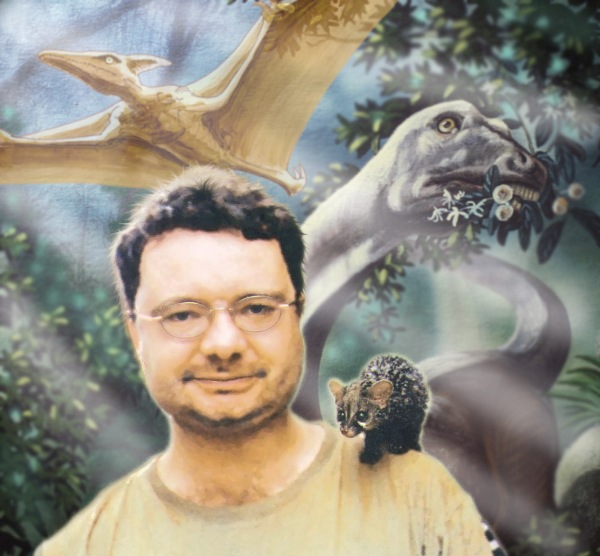
February 28, 2009

Bill Rebsamen’s visual tribute to Scott T. Norman (1964-2008).

Mokele-mbembe seeker and dinosaur scholar Scott T. Norman passed away a year ago, at the very young age of 43. Scott, a mere 15 days before his 44th birthday, died suddenly during the early morning hours of February 29, 2008, in Fullerton, California. The final results of the medical examiner’s investigation indicated that a blood clot had drifted into his lung.
A moment to pause and remember him….
Scott T. Norman was born March 15, 1964 in Salinas, California, to what he said was a cheerful mother (a school librarian) and a thoughtful father (involved in the agriculture industry). Scott grew up with an interest in dinosaurs, as so many boys often do.
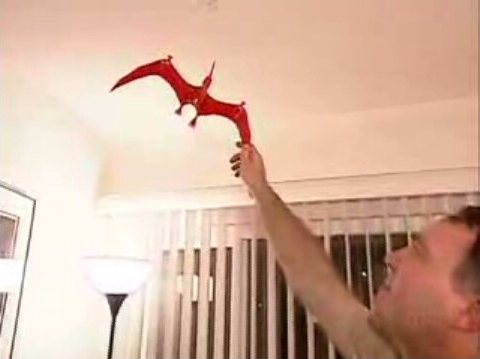
His strong fascination with dinosaurs, supported by his friends, family, and co-workers, translated in the early 1990s into an introduction, through his work, to Herman Regusters.
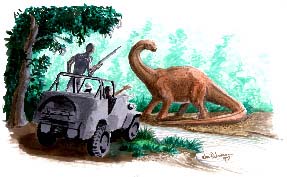
Regusters had been to the Congo in search of Mokele-mbembe, a possible living dinosaur. Scott talked to Herman and was fascinated by what he had to say. Indeed, Scott was intrigued by the video Regusters had created about his trip and Herman’s hopes for the possibility of another trip in the future.

Herman Reguster.
At that time, Scott stored the information about those African dinosaurs in his head. He pondered the possibility of living dinosaurs, but did not pursue the subject yet.
Then, a couple years later, in early 1996, Scott stumbled upon Roy Mackal’s book, A Living Dinosaur? In Search of Mokele-mbembe at the Los Angeles Public Library. After reading the book, Scott started researching more about Mokele-mbembe, and that lead to his strong interest in cryptozoology, in general. (Years later, Scott would have the chance and did interview Mackal.)
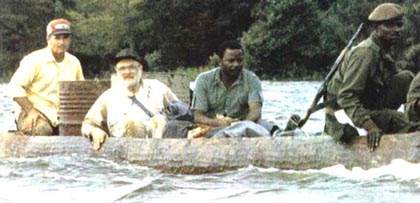
Roy Mackal, in the Congo, in search of Mokele-mbembe.
In July 1996, Scott learned how to create web pages and decided to create a page on Mokele-mbembe. At the same time, he began searching for general information about cryptozoology on the internet, and discovered online resources were scarce. Scott decided to start his own web site on cryptozoology in general, which he called “Cryptozoological Realms.”
Soon, via the web, Scott Norman met Bill Rebsamen, Karl Shuker, Bill Gibbons, John Kirk, Chad Arment, Matt Bille, Milt Marcy, and me. Scott soon joined Bill Gibbons in working on some future planning for possible cryptozoology expeditions.

Scott Norman, via his work as web developer, was helping many cryptozoologists create their sites. Eventually, he was made President of CryptoSafari: Exploring the World’s Hidden Wonders, a non-profit cryptzoological and scientific research organization.
One of Scott’s long-term projects, during these website constructions, was to put the descriptions of all the cryptids in the world on the internet. It sadly remained one of his unfinished projects.
In February 2001, in a joint venture between CryptoSafari and the British Columbia Scientific Cryptozoology Club (BCSCC), Scott Norman became a member of a research team, which traveled to the Republic of Cameroon in central-western Africa to investiage reports of Mokele-mbembe sightings.

The 2001 Cryptosafari expedition members included (left to right) Scott Norman, Bill Gibbons, John Kirk, and Robert Mullin.
The North American expedition team consisted of Scott, Dr. William J. Gibbons, BCSCC president John Kirk and writer Robert A. Mullin. Administrative support in the US was provided by Jackie Raffa.
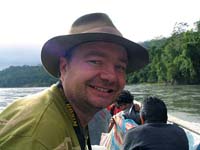
In Cameroon, the team was joined by a video crew from the BCC News and by local guide Pierre Sima Noutchegeni. After an initial exhausting trek through the outer fringes of the rainforest, they were further joined by ten Baka pygmy guides and porters, who were themselves privy to sightings and information about the elusive Mokele.
It was during a break in the ongoing trek to search for Mokele-mbembe signs that the pygmies told of the existence of a fierce creature they had tracked through the forest for seven consecutive days during the previous month, in January 2001. Along with Pierre, the pygmies had discovered three-toed humanlike footprints on the forest floor and realized that they were those of an animal known to them as the Dodu.
The Dodu is said to resemble the Kalanoro or Kalenourou, a protopygmy hairy biped that reportedly inhabits Madagascar. (Scott, John Kirk, and their team used my and Patrick Huyghe’s field guide, thus giving me the feeling I was a small part of their great efforts to identify the Dodu hominoid.)
Next during his trek, Scott Norman and John Kirk were paired off as a subteam to investigate the upper reaches of a river on whose banks the expedition had established its campsite. Along with two Bantu boatmen, Scott and John ran sonar tests in the depths of the river. They found no signs of Mokele-mbembe, however. Nevertheless, strange occurrences would happen with lines and equipment being pulled into the water by animals unseen.
The expedition team’s work gathering interviews continued. Showing natives drawings to identify what cryptids were being seen, the locals would reject the Mackal book’s illustration of a small sauropod dinosaur and point instead to a much larger sauropod—the brachiosaur. Scott reported the village erupted almost as one with the cry: “Mokele-mbembe!!!!!!”.
When Scott visited me in Maine, we talked also of the remarkable reports of a frill on the neck of Mokele-mbembe. Scott related to me Robert Mullin’s theory that the “cock’s comb” commonly described on the Mokele is the developing dorsal frill of an adolescent.
Certainly, for Scott, the 2001 experience was one he always wished to repeat, and he felt there was much more to learn out there in the running waters in the rainforests of central Africa.
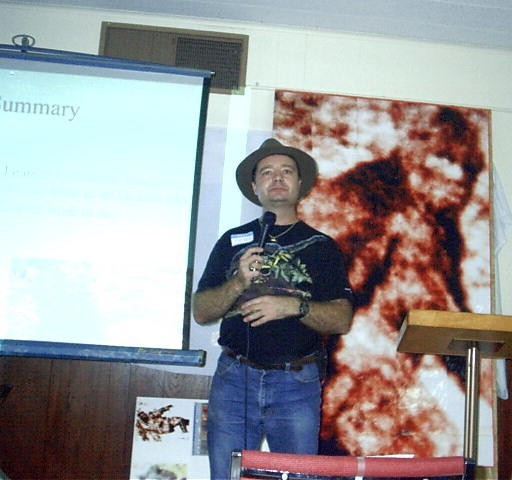
Back from the jungles, Scott decided to give Mokele-mbembe lectures on his adventure. Scott would also talk of the Dodu in his presentations, a couple of which I was happily able to attend. Above is Scott Norman speaking at the Texas Bigfoot Conference in Jefferson.
Of course, for anyone that goes to darkest Africa, the dangers one faces upon returning may be more scary – from the media. For example, because Scott had been to Africa, often the press wanted to characterize him as some Victorian “Indiana Jones” on a fruitless insane quest for living dinosaurs, and appoint him as the point man for all of cryptozoology.
You may have seen Scott T. Norman on that awful “Penn and Teller” program on cryptozoology. The two comedians ridiculed Scott terribly, making fun of his model dinosaurs and his hat.
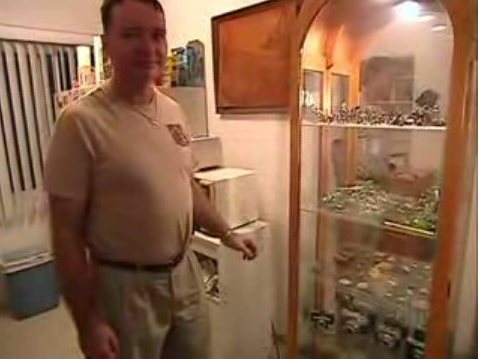
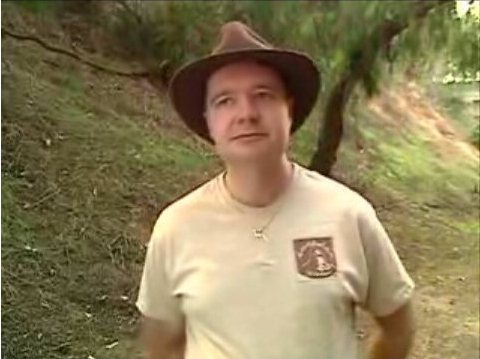
These screen captures are from the outrageous “Penn & Teller” treatment of Scott on their “Cryptozoology” episode. At least, these photos, without their words, in silence, do Scott some justice.
Scott survived that. Still, it was one of the worst experiences he had to live through. Scott would tell me later that it hurt him deeply.
Nevertheless, indeed, the fedora had become a proud trademark of Scott’s.

Scott T. Norman was one of the good guys in cryptozoology. When not involved with his cryptozoology, his work, or his church, Scott was also a First Responder, Community Emergency Response Team (CERT) and, for example, was activated and helped out at the Irvine Wildfire in 2007 in California.
Scott was a deeply religious man whose faith was with him always, and who was calm and intelligent. He will not be able to return to Africa, but Africa had become part of him. I am glad he was able to live his dreams before he left us.
I send out my continuing empathy, sympathy, and sorrow to his friends and friendly family.
Scott, keep searching.
What’s next? Diane Norman, Scott’s mother, tells me that his legacy will live on in two ways, cryptozoologically. First, his contributions will be shared in Bill Gibbons’ forthcoming book on Mokele-mbembe. Second, Scott will live on through the memorial exhibition area (at the International Cryptozoology Museum) constructed from the Norman family’s and Scott’s church’s donated items recovered from Scott’s dinosaur collection.
******
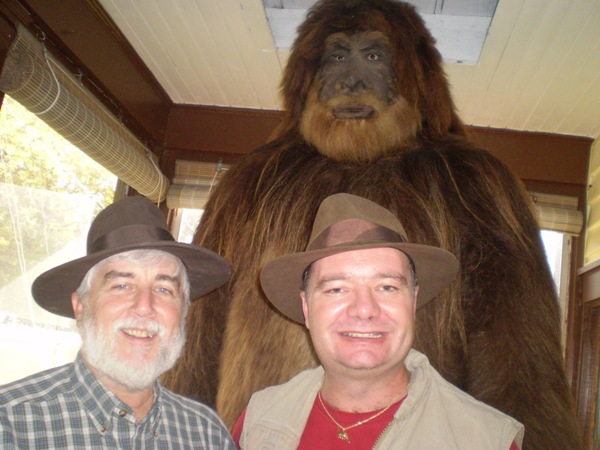
Scott (along with his family) came for a visit to Portland, Maine, in October 2007.
About Loren Coleman
Loren Coleman is one of the world’s leading cryptozoologists, some say “the” leading living cryptozoologist. Certainly, he is acknowledged as the current living American researcher and writer who has most popularized cryptozoology in the late 20th and early 21st centuries.
Starting his fieldwork and investigations in 1960, after traveling and trekking extensively in pursuit of cryptozoological mysteries, Coleman began writing to share his experiences in 1969. An honorary member of Ivan T. Sanderson’s Society for the Investigation of the Unexplained in the 1970s, Coleman has been bestowed with similar honorary memberships of the North Idaho College Cryptozoology Club in 1983, and in subsequent years, that of the British Columbia Scientific Cryptozoology Club, CryptoSafari International, and other international organizations. He was also a Life Member and Benefactor of the International Society of Cryptozoology (now-defunct).
Loren Coleman’s daily blog, as a member of the Cryptomundo Team, served as an ongoing avenue of communication for the ever-growing body of cryptozoo news from 2005 through 2013. He returned as an infrequent contributor beginning Halloween week of 2015.
Coleman is the founder in 2003, and current director of the International Cryptozoology Museum in Portland, Maine.
Filed under Cryptomundo Exclusive, Cryptotourism, CryptoZoo News, Cryptozoologists, Cryptozoology, Giant Cryptid Reptiles, Living Dinosaurs, Living Fossils, Megafauna, Men in Cryptozoology, Mokele-Mbembe, Obituaries